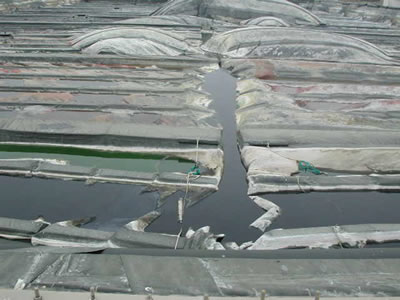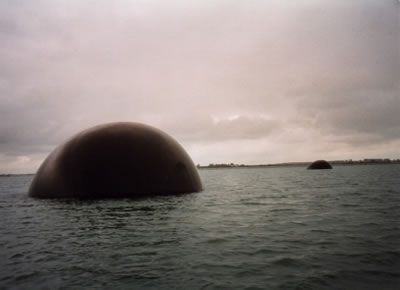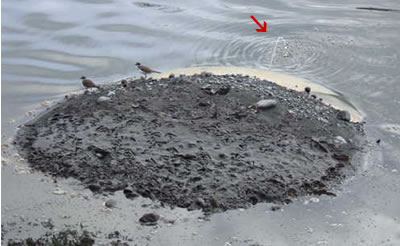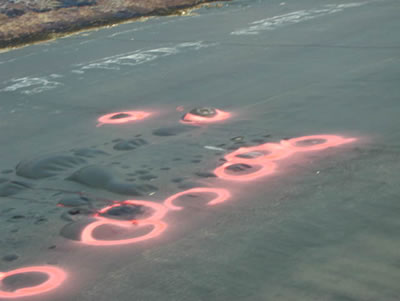Whales, whales, and more whales! They are popping up in many wastewater treatment lagoons. Sometimes they only get as far as the aerators. Liners are typically single geomembranes that owners and local engineers expect to be leak free. Thus, there is typically no subdrain system to collect leaking liquids and to safely remove them. The wastewater under the liner reacts with organic matter in the subgrade to form methane. The methane cannot be vented and collects as bubbles, lifts the liner and whales eventually break surface. Sometimes a cushion geotextile is expected to serve double duty as leakage removal and gas venting. Sometimes strips of geocomposite are used. Often geocomposite is used, but on a flat surface. Unfortunately, leaking water often cannot be drained away so it fills the geonet of the geocomposite preventing the passage of any gas that is generated. And do not forget the air trapped during construction must also be able to be vented on first filling. Common sense dictates that air/gas vents be placed at the tops of the slopes, but in one case they were below the maximum water level! In another case I have seen, small wind turbines act as the vents such that gas is actively extracted when the wind blows. At the same time a small vacuum is generated that helps prevent wind uplift on slopes.
What leakage rates should be specified? Several states have ALRs of about 500 gpad at a 6 ft head. I would like to think that 100 gpad would not be too difficult to achieve by experienced (IAGI) installers on a sensibly designed lining system. Put a gradient on the floor, minimize underwater seals, use a subdrain system, use a gas venting system, collect and monitor leakage so it can be seen when it exceeds a tolerable amount, use an experienced installer. If you do not, here is an example of what can happen.
 |
|
In an anaerobic digester gas under the base liner lifted both the liner and the floating cover.
|
 |
| Remnants of 12 whales after water level was lowered. |
A facility owner had an inexperienced designer outline the design of a liner but expected the liner installer to fine-tune the design. Of two installers he chose a local installer rather than a nationally recognized one because of a $15,000 lower cost. Filling would not exceed half the designed depth and very soon 12 whales formed. The pond was emptied and the liner examined. In only about 25% of the total liner area of about 10 acres there were 109 leaks, from small cuts to zero weld bead around 25% of a seam destructive sample repair patch! The liner was torn out, the bottom regraded, and geocomposite with additional venting composite placed underneath a new liner together with a leak monitoring system, all installed by the installer that lost the bid the first time. The cost to re-do the liner? About $1.3M and about 9 months lost time. A saving of $15,000 would have been well worth overlooking. Leakage now? Negligible. Whales? None.
Seen any good whales lately?
 |
|
In a WWTP there were a few blisters on the back of a large HDPE whale.
|
 |
| Two huge whales in an LLDPE mine tailings pond liner. Thickness reduction was about 50% and one side was somewhat flattened. |
 |
| Gary Arndt sent in a picture of a small whale taking a leak in a waste water treatment pond. |
 |
| Not a whale, but interesting blisters in a CSPE waste water pond liner – some had holes in the top, others did not. |
And we have just heard of bursting whales in a WWTP “HDPE” liner, actually an HDPE slit film woven with coatings of LLDPE.
Please note that not one of these problems was due to faulty geosynthetic material.
If you have any more interesting whale sightings, please send us an image.











